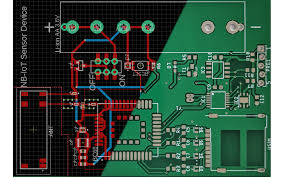Early Detection of Design Flaws
One of the primary advantages of using prototype PCBs is the early detection of design flaws. Before moving into mass production, prototypes allow engineers to identify and correct errors in the circuit design. This proactive approach can reveal issues like incorrect component placement, trace routing problems, or inadequate spacing that might not be evident in software simulations. By resolving these issues early, companies can avoid costly recalls or redesigns that might arise after product launch.
Testing and Functionality Verification
Prototype PCBs play a crucial role in testing and functionality verification. They provide a physical platform to conduct thorough testing procedures, including stress tests and performance evaluations under various environmental conditions. This hands-on testing is invaluable for verifying theoretical designs and ensuring that the final product will perform as intended under real-world conditions. For instance, a PCB intended for use in automotive applications can be tested for vibration and temperature resistance to guarantee its reliability.
Integration and Compatibility Testing
Another significant benefit of prototype PCBs is their use in integration testing. Designers can test how a new PCB integrates with existing systems, ensuring compatibility across different components. This is particularly important in complex devices where multiple PCBs must function seamlessly together. Prototypes allow engineers to detect integration issues early and make necessary adjustments to the design, thereby reducing the risk of interoperability failures in the final product.

Cost-Effective Design Adjustments
Using prototype PCBs enables more cost-effective design adjustments. Making changes to a design during the prototyping phase is considerably less expensive than making those changes during full-scale production. For example, altering a trace route or component on a prototype board might cost a few hundred dollars, whereas making the same alteration after production has started could cost thousands, depending on the scale of the production and the nature of the change.
Feedback Loop and Iterative Design
Prototyping fosters an effective feedback loop, enabling an iterative design process. This process allows designers to refine their PCBs based on real data and feedback collected from testing the prototypes. Each iteration improves the design, enhancing the quality and functionality of the PCB. This iterative process is crucial for developing high-tech products where precision and reliability are paramount.
Stakeholder Confidence
Finally, prototype PCBs boost stakeholder confidence. By demonstrating a working prototype, companies can assure investors and customers of the viability and progress of the product. Prototypes also facilitate marketing efforts by providing a tangible product for demonstrations and evaluations.
The Bigger Picture
In essence, prototype PCBs are vital in reducing design risks and ensuring that the final products are reliable, effective, and ready for market challenges. They provide a practical, cost-effective, and strategic approach to product development. For those seeking further information or services related to prototyping, exploring prototype pcb offers valuable insights and resources.
